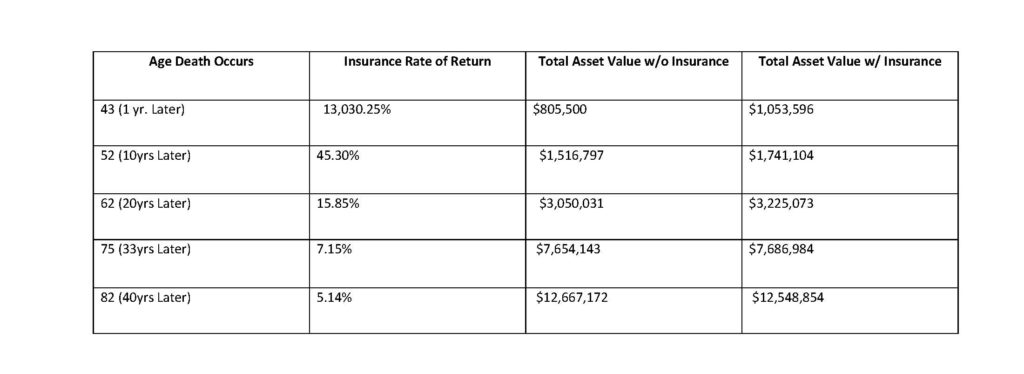Insurance Considerations When You Have Children

A growing family, by definition, means growing financial obligations – both in the present and in the future. Raising children can increase your insurance needs and heightens the urgency for being properly prepared.
Auto. When a child becomes a new driver, one option is to add the teenager to the parents’ insurance policy. You may want to discuss with your auto insurer ways to reduce the additional premium that accompanies a new driver.[i]
Home. You should periodically review your homeowner’s insurance policy for three primary reasons.
A growing family generally accumulates increasing amounts of personal belongings. Think of each child’s toys, clothes, electronic equipment, etc. Moreover, household income tends to rise during this time, which means that jewelry, art, and other valuables may be among your growing personal assets.
The second reason is that the costs of rebuilding – and debris removal – may have risen over time, necessitating an increase in insurance coverage.
Lastly, with growing wealth, you may want to raise liability coverage, or if you do not have an umbrella policy, consider adding it now. Umbrella insurance is designed to help protect against the financial risk of personal liability.
Health. With your first child, be sure to change your health care coverage to a family plan. If you and your spouse have retained separate plans, you may want to evaluate which plan has a better cost-benefit profile. Think about whether now is the appropriate time to consolidate coverage into one plan.
Disability. If your family is likely to suffer economically because of the loss of one spouse’s income, then disability insurance serves an important role in replacing income that may allow you to meet living expenses without depleting savings.
If you already have disability insurance, consider increasing the income replacement benefit since your income and standard of living may now be higher than when you bought the policy.
Life. With children, the amount of future financial obligations increases. The cost of raising children and funding their college education can be expensive. Should one of the spouses die, the loss of income might severely limit the future quality of life for your surviving children and spouse. Not only does death eliminate the future income of one spouse permanently, but the future earning power of the surviving spouse might be diminished as single parenthood may necessitate fewer working hours and turning down promotions.
The amount of life insurance coverage needed to fund this potential financial loss is predicated on, among other factors, lifestyle, debts, ages and number of children, and anticipated future college expenses.
Several factors will affect the cost and availability of life insurance, including age, health, and the type and amount of insurance purchased. Life insurance policies have expenses, including mortality and other charges. If a policy is surrendered prematurely, the policyholder also may pay surrender charges and have income tax implications. You should consider determining whether you are insurable before implementing a strategy involving life insurance. Any guarantees associated with a policy are dependent on the ability of the issuing insurance company to continue making claim payments.
Some couples decide to have one parent stay at home to care for the children full time. The economic value of the stay-at-home parent is frequently overlooked. Should the stay-at-home parent die, the surviving parent would likely need to pay for a range of household and childcare services, and potentially, suffer the loss of future income due to the demands of single parenthood.
Extended Care. The earlier you consider extended care choices, the better. However, the financial demands of more immediate priorities, like saving for your children’s college education or your retirement, will take precedence if resources are limited.
To discuss your family’s insurance needs with a CapSouth advisor, contact our office at 800.929.1001 or visit our website at https://capsouthwm.com/contact/
Investment advisory services are offered through CapSouth Partners, Inc., dba CapSouth Wealth Management, an independent registered Investment Advisory firm. Information provided by sources deemed to be reliable. CapSouth does not guarantee the accuracy or completeness of the information. This material has been prepared for planning purposes only and is not intended as specific tax or legal advice. Tax and legal laws are often complex and frequently change. Please consult your tax or legal advisor to discuss your specific situation before making any decisions that may have tax or legal consequences.
This article contains external links to third party content (content hosted on sites unaffiliated with CapSouth Partners). The policies and procedures governing these third-party sites may differ from those effective on the CapSouth company website, as outlined in these Disclaimers. As such, CapSouth makes no representations whatsoever regarding any third-party content/sites that may be accessible directly or indirectly from the CapSouth website. Linking to these third-party sites in no way implies an endorsement or affiliation of any kind between CapSouth and any third party, including legal authorization to use any trademark, trade name, logo, or copyrighted materials belonging to either entity.
[i] https://cars.usnews.com/cars-trucks/car-insurance/average-cost-of-car-insurance





